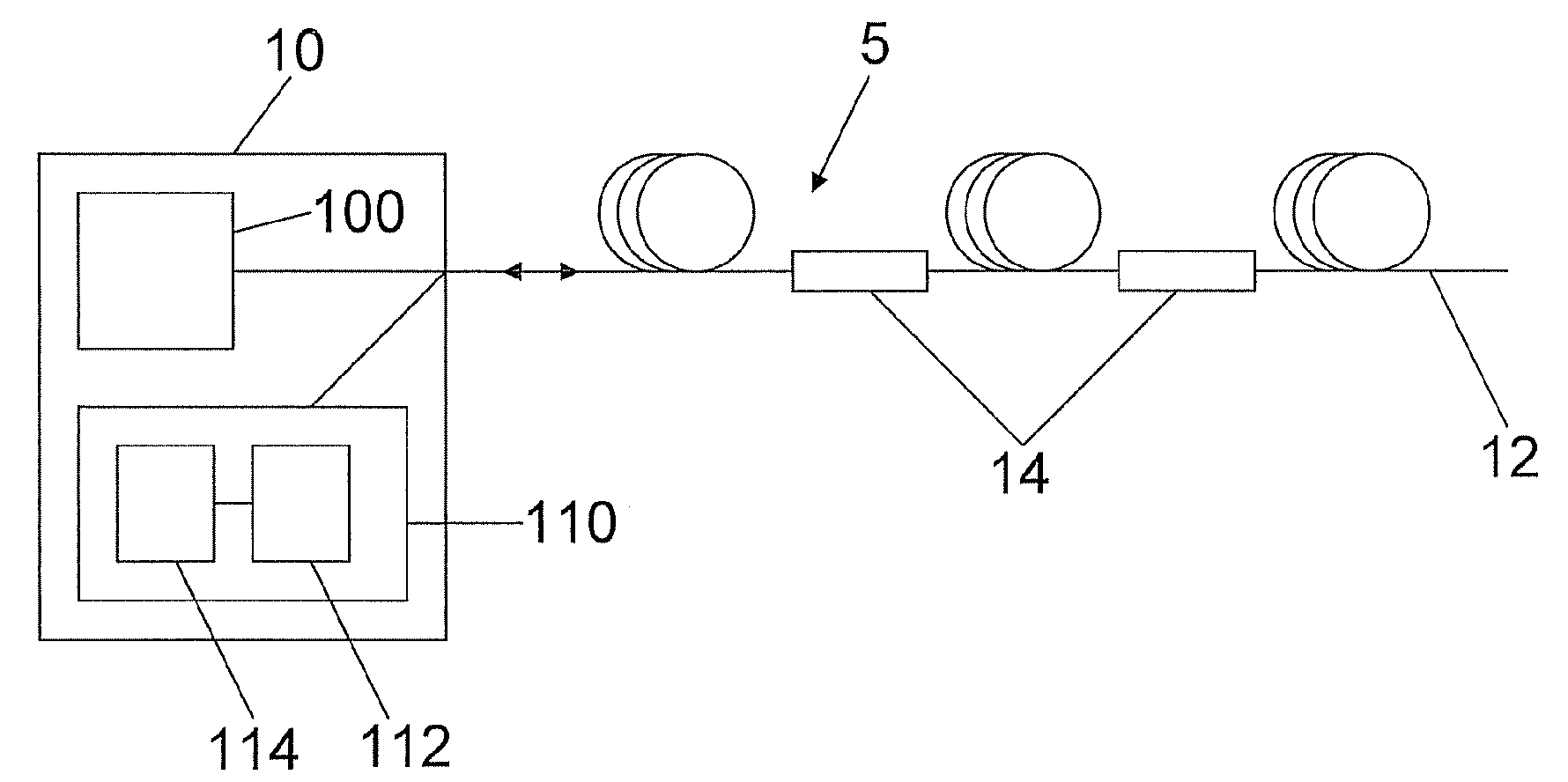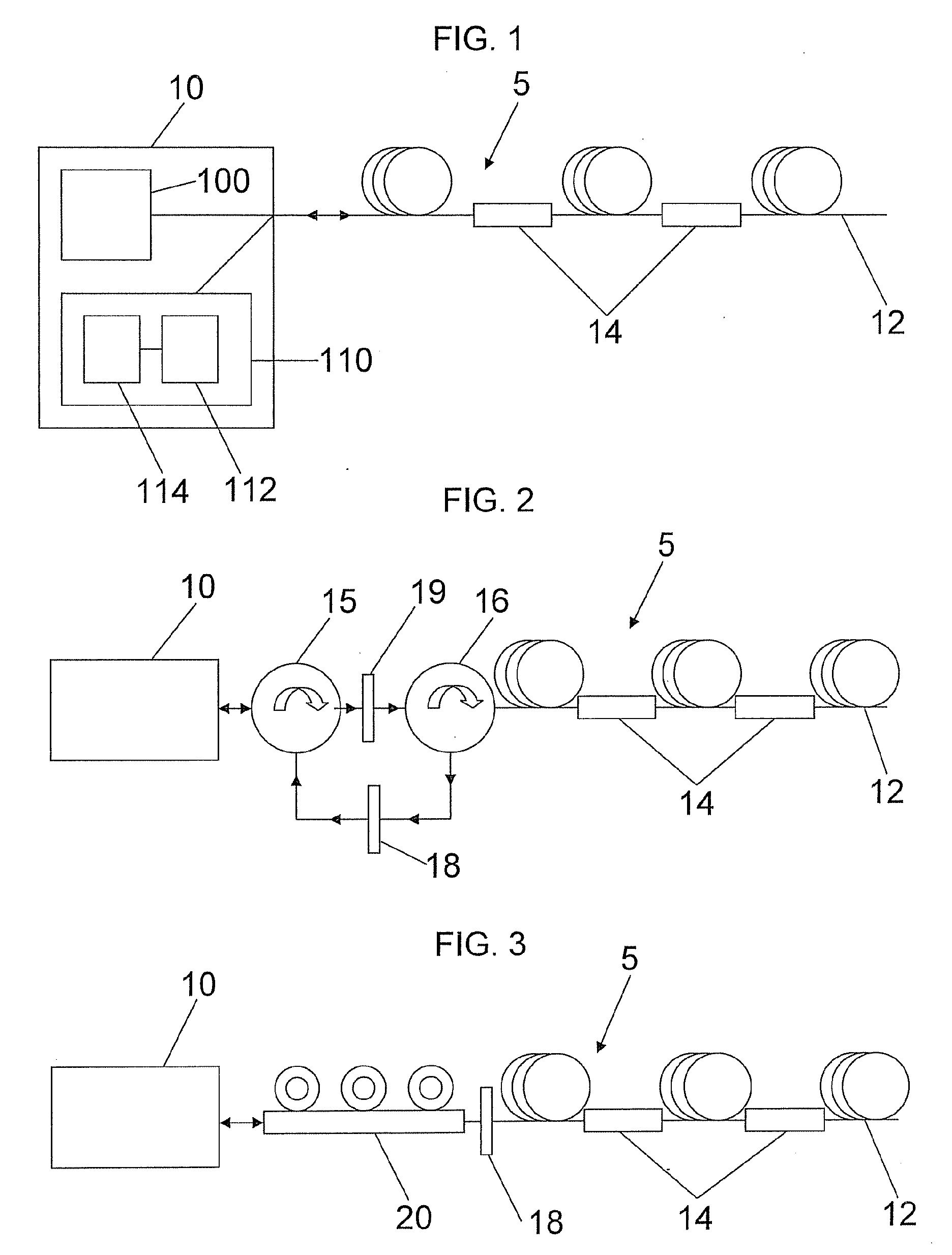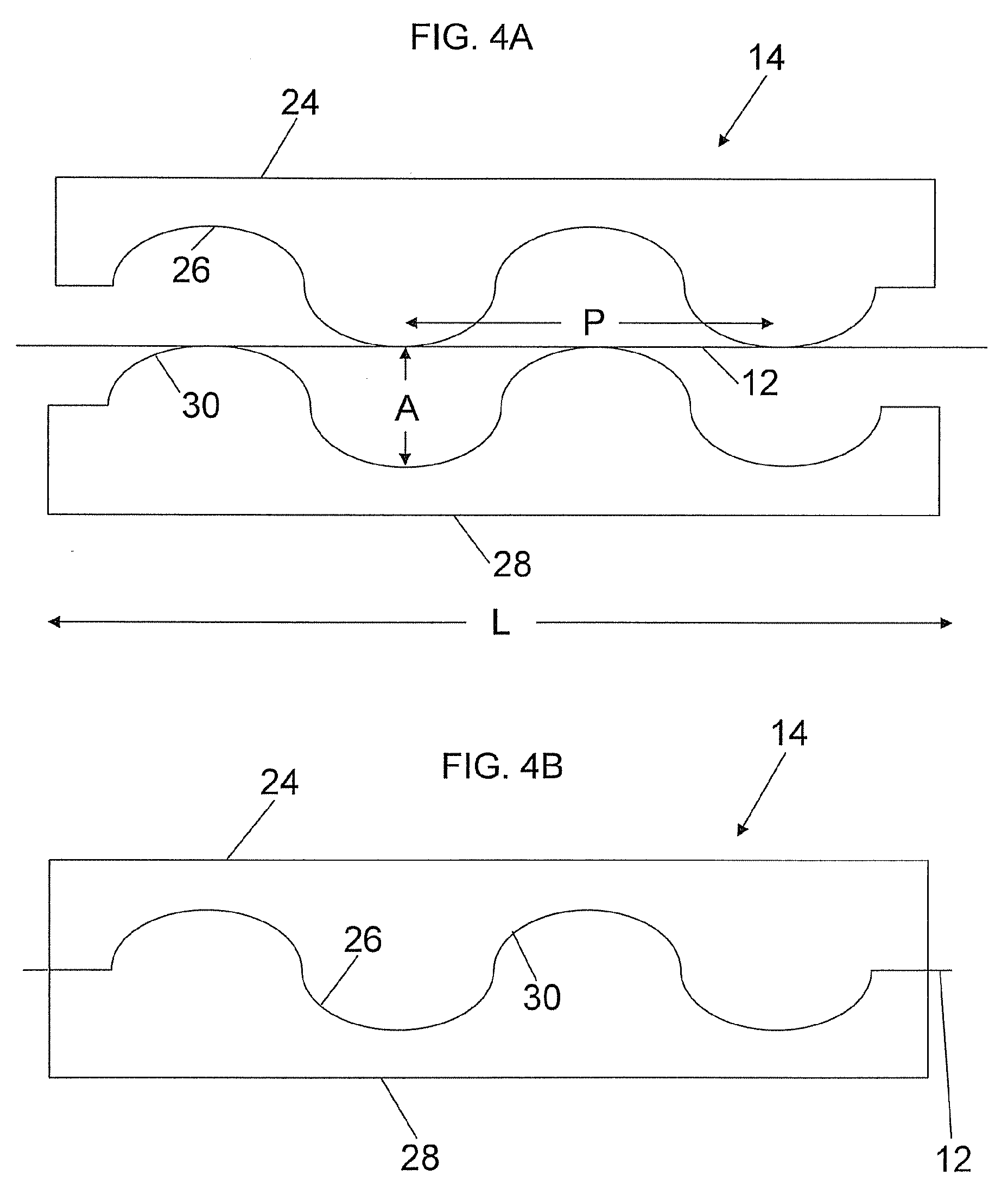Intrusion Detecting System With Polarization Dependent Sensing Elements
a polarization-dependent sensing element and intrusion detection technology, applied in the field of methods and systems for detecting disturbances, can solve the problems of complex system design, large capital investment, and constant threat of perimeter breaching by unwanted intruders,
- Summary
- Abstract
- Description
- Claims
- Application Information
AI Technical Summary
Problems solved by technology
Method used
Image
Examples
example 1
[0057]An HP 8147 OTDR outputting 10 ns pulses at a wavelength of 1550 nm, was used to launch optical pulses into an unjacketed single mode optical fiber having a length of 50 kilometers. At a distance of about 9.8 kilometers along the fiber, a paddle polarization controller with 3 paddles was used to simulate intrusion effects, followed by a microbending gear rack having a length of about 3 centimeters and opposing corrugated surfaces having a period of about 1 millimeter and an amplitude of about 400 μm. The microbending gear rack was mounted on a translation stage coupled to a load cell that allows determination as to the amount of force applied onto the fiber. The distance between the polarization controller and microbending gear rack was 20 meters. This same polarization controller and microbending gear rack configuration was repeated 80 meters beyond the first microbending gear rack. A LabView VI controlled the OTDR, compared new backscattered traces with stored background refe...
example 2
[0060]The experimental conditions set forth in Example 1 were repeated except instead of moving a paddle on the polarization controller nearer to the ODTR, a paddle on the polarization controller farther from the ODTR was moved. This movement also resulted in a polarization change of the incoming light, causing mode coupling to occur where the fiber was subjected to microbending, inducing a noticeable change in the RBS, allowing for pinpointing of the time and location of the disturbance. The resulting difference trace is shown in FIG. 9A and the resulting moving standard deviation and intrusion location A is shown in FIG. 9B.
example 3
[0061]The experimental conditions set forth in Examples 1 and 2 were repeated except both polarization controllers were removed and hardcover books were placed over a portion of the fiber between the microbending gear racks (i.e., at a distance of between about 9.82 and 9.9 kilometers along the fiber). The pressure of the weight of the books resulted in a polarization change of the incoming light, causing mode coupling to occur where the fiber was subjected to microbending, inducing a noticeable change in the RBS, allowing for pinpointing of the time and location of the disturbance. The resulting moving standard deviation of the difference trace is shown in FIG. 10. While the detected signal in this example is about an order of magnitude lower than in Examples 1 and 2, it was still well above the perturbation threshold of 0.008 a.u.
PUM
 Login to View More
Login to View More Abstract
Description
Claims
Application Information
 Login to View More
Login to View More - R&D
- Intellectual Property
- Life Sciences
- Materials
- Tech Scout
- Unparalleled Data Quality
- Higher Quality Content
- 60% Fewer Hallucinations
Browse by: Latest US Patents, China's latest patents, Technical Efficacy Thesaurus, Application Domain, Technology Topic, Popular Technical Reports.
© 2025 PatSnap. All rights reserved.Legal|Privacy policy|Modern Slavery Act Transparency Statement|Sitemap|About US| Contact US: help@patsnap.com



